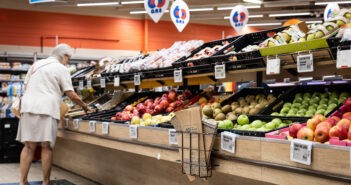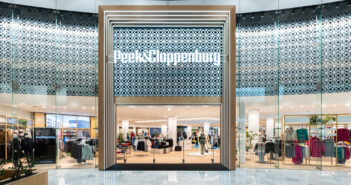The economic advantages of turning stores into micro-fulfilment spaces and to optimise store locations and leverage store formats was debated by logistics players at the latest MAPIC Digital session on 2 September in a digital session dedicated to logistics in the retail industry and as part of the build-up to MAPIC 2021.
This online event also provided a unique and exclusive opportunity to discuss innovation, the supply chain and new formats in logistics in the retail industry. These areas will once again form an important part of MAPIC 2021, which takes place in Cannes, France from 30 November to 2 December this year, after being held digitally alongside LeisurUp in 2020.
Speakers included David Hickey, managing director, Hickey & Associates, and Lincoln Cavalieri, CEO, Urbx, with Thomas Steinmuller, CEO, CapTen moderating the session on logistics in the retail industry.
Cavalieri introduced his specialist micro-fulfilment centre business, which started in 2016 and has evolved in partnership with grocery partners to create a limited assortment neighbourhood delivery format. Robot picking from a small footprint outlet called Curbside starts with retail store logistics as small as 900 sq ft. He said that 50 items can be packed in 2.25 minutes and out for delivery via the likes of DoorDash and Deliveroo in 15 minutes.
Curbside is what we are going to market with,” he said. “We have future-proofed it with the capability for drone delivery. Customers can collect and for a fee there is also a concierge service to help with packing.
For urban supply chain formats, Urbx Market will focus on filling e-commerce orders to the many consumers that live around its stores, the first of which is slated to be built in Boston next year. Pickup orders and e-bike deliveries will get orders to shoppers within an hour. Cavalieri estimates that the store will cost between $5 million and $7 million to build but with lower real estate costs than traditional grocery stores and higher e-commerce productivity.
Pandemic accelerates logistics in the retail industry
David Hickey, managing director, Hickey & Associates, said that “everything has been incredible over the past 18 months”, in terms of the pace of logistics take-up, “ever since the immediate disruptions to the supply chain starting in Asia and what that has meant” for global logistics and the flow of goods.
What we’ve seen on the logistics side is that a number of the elements that were in place for centralised distribution have changed,” he said of the rise of last mile retail logistics solutions. “We are going to see traditional brick and mortar companies getting into the mix, or acquiring in this field. We’re also seeing disruption from players looking at micro-fulfilment.
While the challenges around COVID have certainly sped up supply chain adoption and the need to ensure the flow of goods, he also pointed out that many of the trends are longstanding, including labour challenges and the inevitable movement towards robots within retail and logistics management.
We had challenges before the pandemic to find labour and it’s even harder than before. Overall the competition for workers is even fiercer,” said Hickey. “It’s becoming more and more of a challenge. Right now, logistics still requires significant workforces. Finding, training and retaining those will become increasingly difficult.
Retail logistics: The future is closer
In terms of micro-fulfilment and futuristic options such as delivery drones, Hickey admitted: “If we had asked two years ago, we would have said it is five to ten years out. One thing that might be slowing it down is regulatory. The other is customer acceptance and demand for that last mile or home delivery, not only for e-commerce but quick commerce.”
He also noted the challenges to find real estate for suburban retail logistics solutions, not just to identify retail distribution sites for core city centres and said that retail is seeing more production move nearer to the consumer, to optimise the speed and cope with demand.
“Historically, it [shopping]was about coming into the store to touch and feel, but that is less and less the case. So what do we do with that retail space? Certainly one of those options is to continue in retail to serve some of this but also for direct logistics and micro-fulfilment,” he said.
Cavalieri added: “I do feel micro-fulfilment is inevitable. When you can put a kerbside collection on 3,000 sq ft, the economics alone mean this trend is not going to stop and in the end will be the dominant, everyday thing.”
And he agreed that regulation and approval was the main thing holding back drone delivery by retail and logistics companies.
The technology is there to do drone delivery now, the issue is about showing that it’s safe and can be executed at scale,” he said. “But I don’t think you can have drones without micro-fulfilment, they are one and the same. The micro-fulfilment centres are going to play a major role over the next five to ten years.
Recasting the retail store & the new role of logistics is available on-demand and is part of MAPIC’s overall theme for 2021, People and Places: A New Chapter, which will bring together MAPIC, LeisurUp and The Happetite. It is part of a series of digital events, which will provide valuable insight on a range of topics and trends.
MAPIC, LeisurUp and The Happetite will be held together at the Palais des Festivals, Cannes, France from 30 November to 2 December.
For more content on logistics see supply chain report logistics post pandemic challenges and european logistics the lowdown.





